It takes a special kind of person to willingly suspend yourself 20 meters above the ground with only one carabiner and the grip strength in your left hand for safety. You must have either a high level of trust in your equipment, supreme confidence in your own skill, or reckless disregard for your own life — perhaps a little of each.
This is the adrenaline-fueled thrill of rock climbing, and for those looking to get their feet wet in the sport, Longdong (龍洞, literally “Dragon Cave”) in New Taipei City is the place to do it. For those looking to literally get their feet wet, Longdong is also a popular snorkeling, scuba and freediving destination.
‘THE CRACK HOUSE’
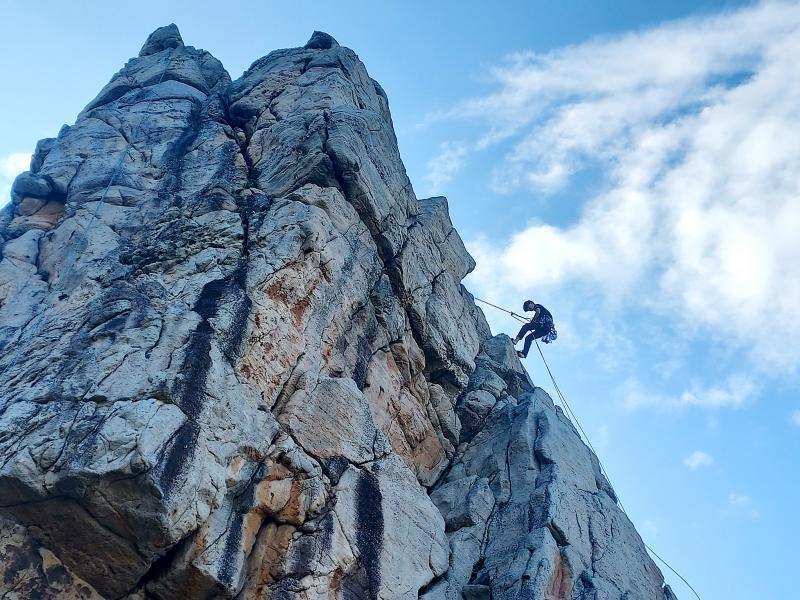
Photo: Tyler Cottenie
Our day of climbing began at a local hostel, where we met up with our instructor. Immediately upon entering this hostel — humorously named “The Crack House” — one can see that it is no ordinary place. Nearly half the common area on the first floor is taken up by a floor mat and a bouldering wall: a diagonal wall covered in plastic hand and foot-holds on which climbers can practice their skills. The hostel also offers rentals for all basic rock-climbing gear, available to students as well as to experienced independent climbers who don’t need an instructor.
At The Crack House we underwent a short theory session and then got fitted with climbing shoes, harnesses and helmets. Climbing shoes are made with function taking precedence over comfort; they squeeze your toes together into one tight bundle, allowing the foot to gain solid purchase on the thinnest of outcroppings. Before heading out, our instructor had us hang from the ceiling beam in the common room on a rope and harness to get used to the feeling of hanging in the air while in a controlled environment, without the terror of having 100 feet of open space below.
THE CLIFFS
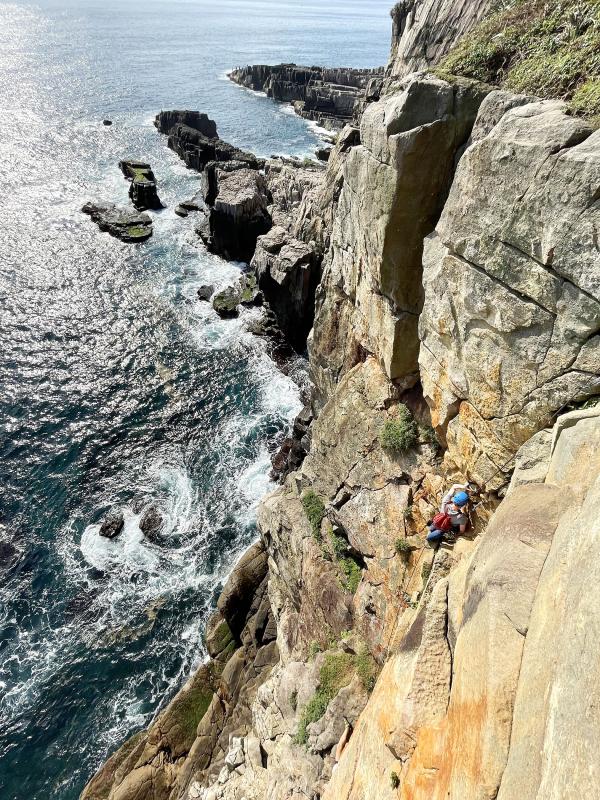
Photo courtesy of Patience Ku
The Longdong climbing area is divided up into districts with names inspired by parts of a school: there is the School Gate area, the Music Hall, the Grand Auditorium and the Back Door, where we went for our first climb of the day.
The Back Door is on a promontory at the south end of Longdong. A path down a gradual slope provides access to the shoreline below, not only for rock climbers but also for local fishermen and divers. It is hard to imagine a more scenic place to undertake any of these activities: a mile of undeveloped coastline where broken cliffs tumble into the rich blue waters of the Pacific.
From the parking lot for the Back Door, a hiking trail follows the coast above the climbing area all the way up to the northern entrance to Longdong. For those with a fear of heights, this is another way of appreciating the beauty of Longdong without risking your life hanging off a cliff face.
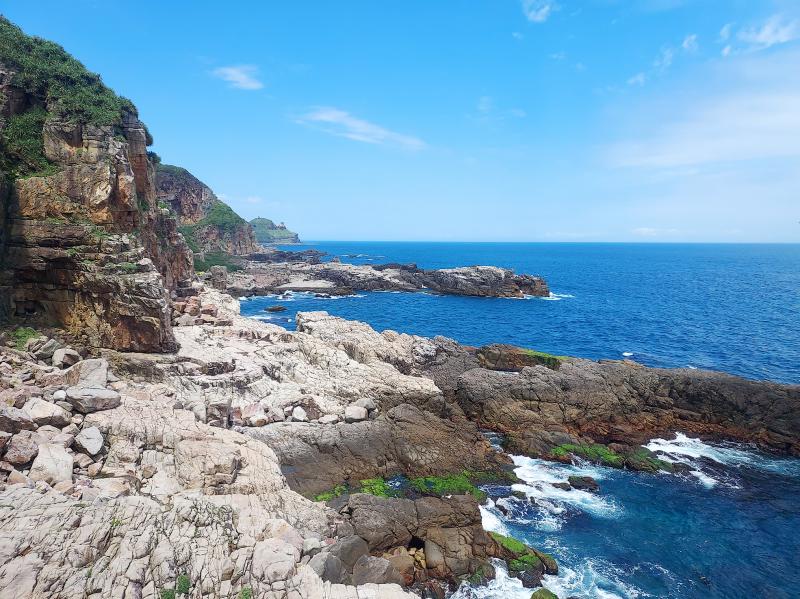
Photo: Tyler Cottenie
After a five-minute descent to the bottom, we then spent over two hours just trying to get back up to where we’d started, straight up a cliff. Our instructor taught us the via ferrata technique for use on a temporary route she had just set up with removable climbing gear.
Various cams and nuts were set up in cracks in the wall, supporting our main rope. We were hooked onto this rope at two points with carabiners. As we ascended and the carabiners ran into these “protections,” we had to move one clip at a time over the protection onto the next section of the main rope. Completing this movement with only one hand, as the other hand holds onto the rock face for dear life, takes some practice.
Halfway up the cliff, there was a ledge just wide enough to sit on. Our instructor pulled out a little folding table, cinnamon buns and a thermos filled with an ice-cold drink containing local agar jelly, and we had a little picnic right there on our perch, looking out at the Pacific Ocean as a group of freedivers swam below.
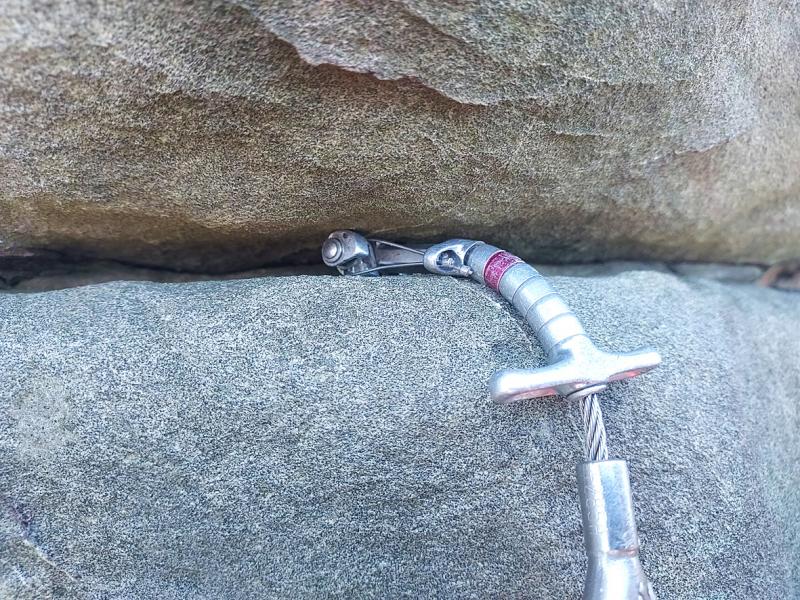
Photo: Tyler Cottenie
We were lucky in that the weather was cooperating with us that day. The afternoon sun had already moved behind the cliff, shading us from its direct heat, but it lit up the ocean in front of us under a perfect blue sky.
CLIMBING AND MORE
Having gained confidence in the via ferrata technique, the rest of the climb proceeded smoothly and before long we were back up at our starting point. We then jumped in a car and drove around to the far northern end of Longdong, the School Gate, for another climb.
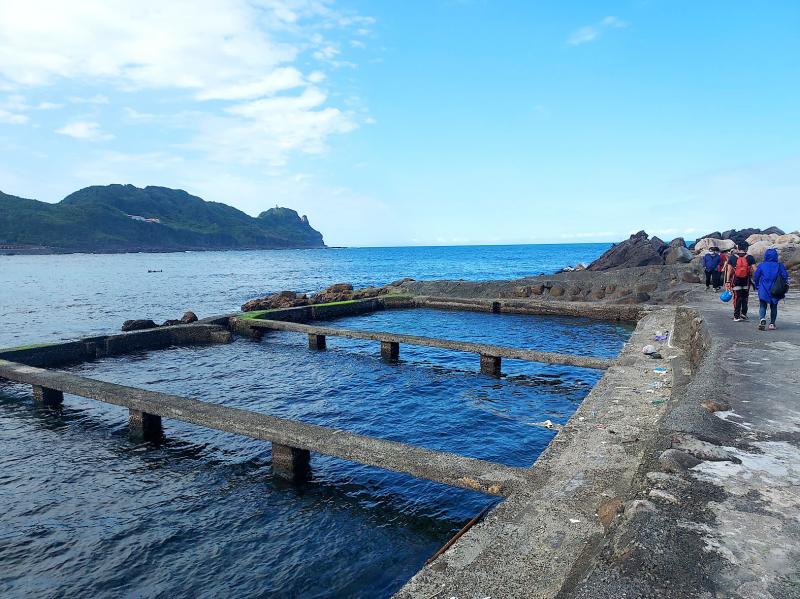
Photo: Tyler Cottenie
Whereas we were the only group on the first route, here there were independent climbers and other instructors with newbie climbers. In fact, we had to wait for another group to finish on the route our instructor had selected, so we had time to explore the area on foot as we waited.
Nearby was a partially sheltered ocean swimming hole where people were snorkeling, and participating in yet another adrenaline-fueled activity: cliff diving. For those not interested in rock climbing, Longdong still has you covered for a good outdoor adventure.
When it was finally our turn to climb again, we were coached up a daunting cliff face by our instructor using the toprope belay technique. This is the common climbing practice that probably comes to mind for most people, with the climber grabbing or stepping onto any protrusions in the rock they can find in order to climb straight up the cliff, while a safety rope runs from their harness up to the top of the cliff and back down to another person on the ground who can arrest their fall.
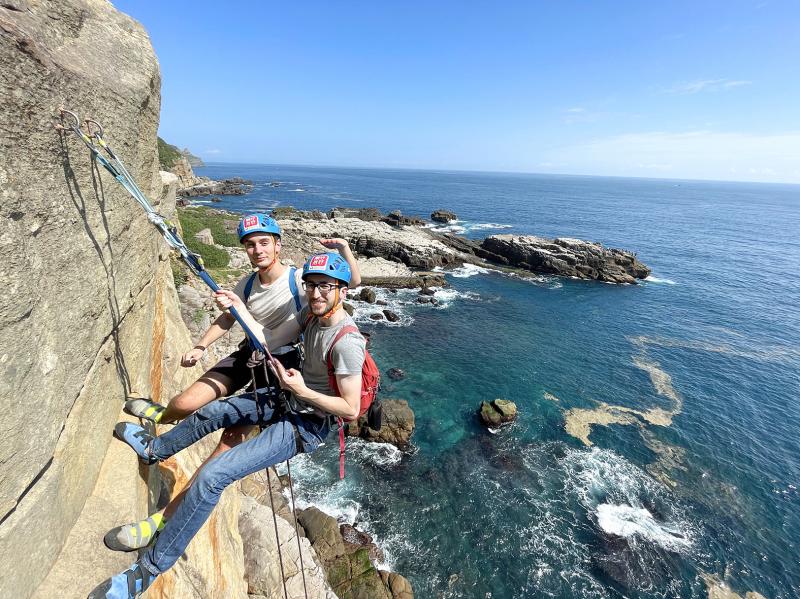
Photo courtesy of Patience Ku
People have actually been climbing at Longdong for decades already, so even on a single outcropping of rock there may already be several established routes. Our instructor chose one that included an overhang, something I had never attempted at an indoor climbing wall and that seemed to require upper-body strength that I just didn’t have.
However, as the instructor hollered instructions from the ground (Put your hand there! Lean backward! Reach higher… no, higher… no, higher!), I found myself surprised at what my body was capable of, as well as at the amount of strategy involved in thinking through a successful climb, something she had honed from years of experience. Not only did I make it through the overhang, I even made it to the top of the cliff. This clearly demonstrated the value in having an experienced instructor on hand: alone, there is no way I would have made it; I did actually have the strength, but not the skill.
Whether you’re an adrenaline junkie looking to have fun climbing or jumping off cliffs; looking for a new place to explore the underwater world through snorkeling, scuba or freediving; or simply looking for a beautiful seascape to admire from the safety of solid ground, Longdong has it all.
For accommodations or rock climbing advice and instruction (in both Chinese and English), visit The Crack House’s Web site at www.taiwanlongdongclimbinghostel.com.

That US assistance was a model for Taiwan’s spectacular development success was early recognized by policymakers and analysts. In a report to the US Congress for the fiscal year 1962, former President John F. Kennedy noted Taiwan’s “rapid economic growth,” was “producing a substantial net gain in living.” Kennedy had a stake in Taiwan’s achievements and the US’ official development assistance (ODA) in general: In September 1961, his entreaty to make the 1960s a “decade of development,” and an accompanying proposal for dedicated legislation to this end, had been formalized by congressional passage of the Foreign Assistance Act. Two

Despite the intense sunshine, we were hardly breaking a sweat as we cruised along the flat, dedicated bike lane, well protected from the heat by a canopy of trees. The electric assist on the bikes likely made a difference, too. Far removed from the bustle and noise of the Taichung traffic, we admired the serene rural scenery, making our way over rivers, alongside rice paddies and through pear orchards. Our route for the day covered two bike paths that connect in Fengyuan District (豐原) and are best done together. The Hou-Feng Bike Path (后豐鐵馬道) runs southward from Houli District (后里) while the

March 31 to April 6 On May 13, 1950, National Taiwan University Hospital otolaryngologist Su You-peng (蘇友鵬) was summoned to the director’s office. He thought someone had complained about him practicing the violin at night, but when he entered the room, he knew something was terribly wrong. He saw several burly men who appeared to be government secret agents, and three other resident doctors: internist Hsu Chiang (許強), dermatologist Hu Pao-chen (胡寶珍) and ophthalmologist Hu Hsin-lin (胡鑫麟). They were handcuffed, herded onto two jeeps and taken to the Secrecy Bureau (保密局) for questioning. Su was still in his doctor’s robes at

Mirror mirror on the wall, what’s the fairest Disney live-action remake of them all? Wait, mirror. Hold on a second. Maybe choosing from the likes of Alice in Wonderland (2010), Mulan (2020) and The Lion King (2019) isn’t such a good idea. Mirror, on second thought, what’s on Netflix? Even the most devoted fans would have to acknowledge that these have not been the most illustrious illustrations of Disney magic. At their best (Pete’s Dragon? Cinderella?) they breathe life into old classics that could use a little updating. At their worst, well, blue Will Smith. Given the rapacious rate of remakes in modern